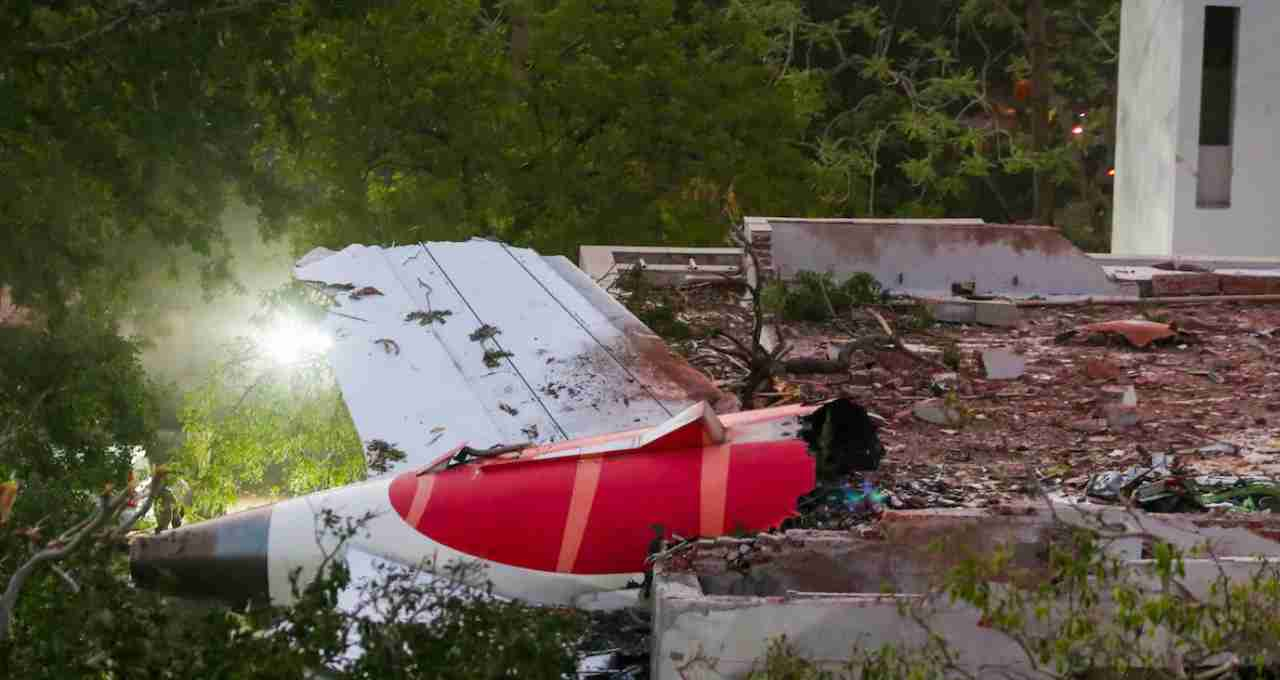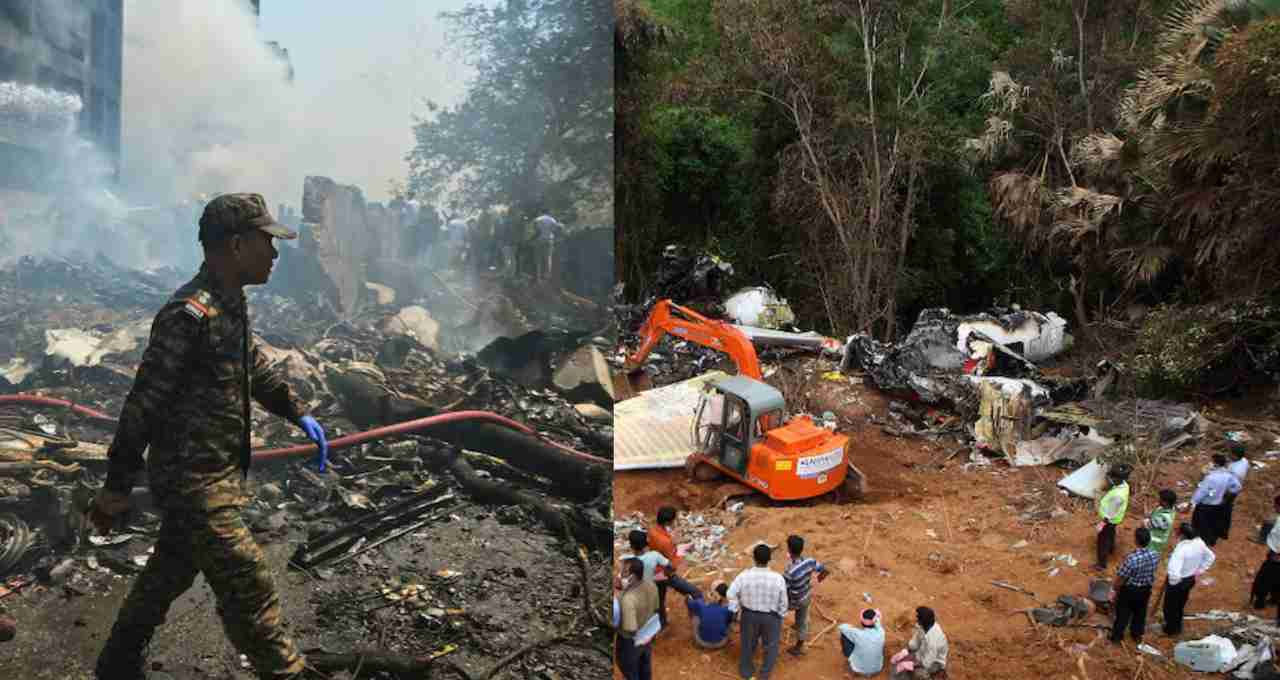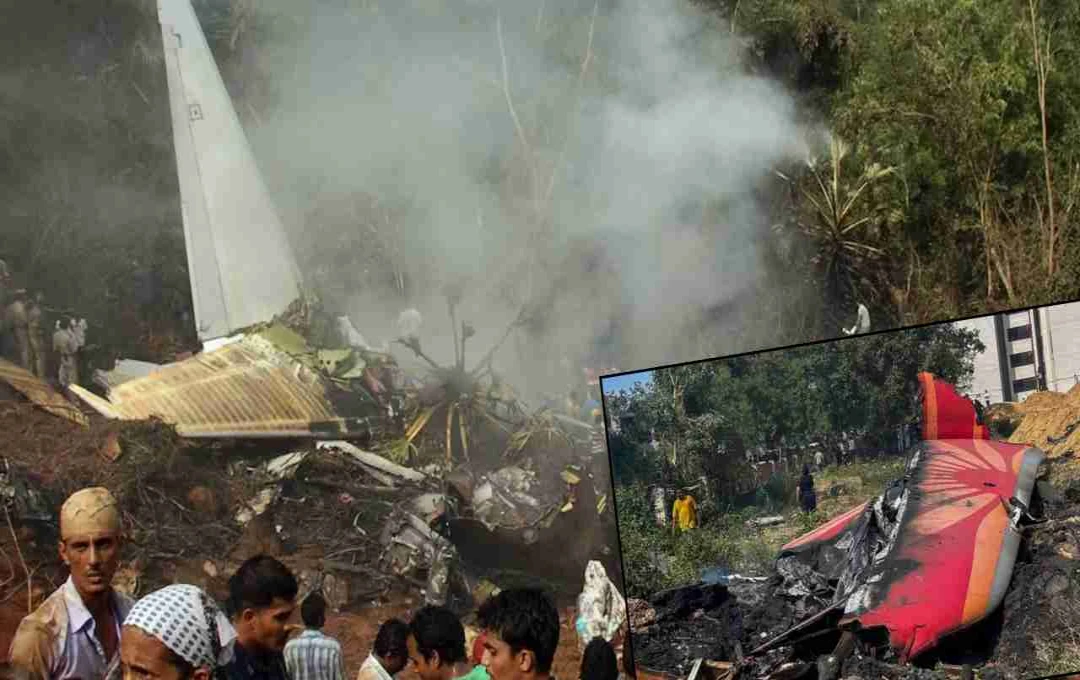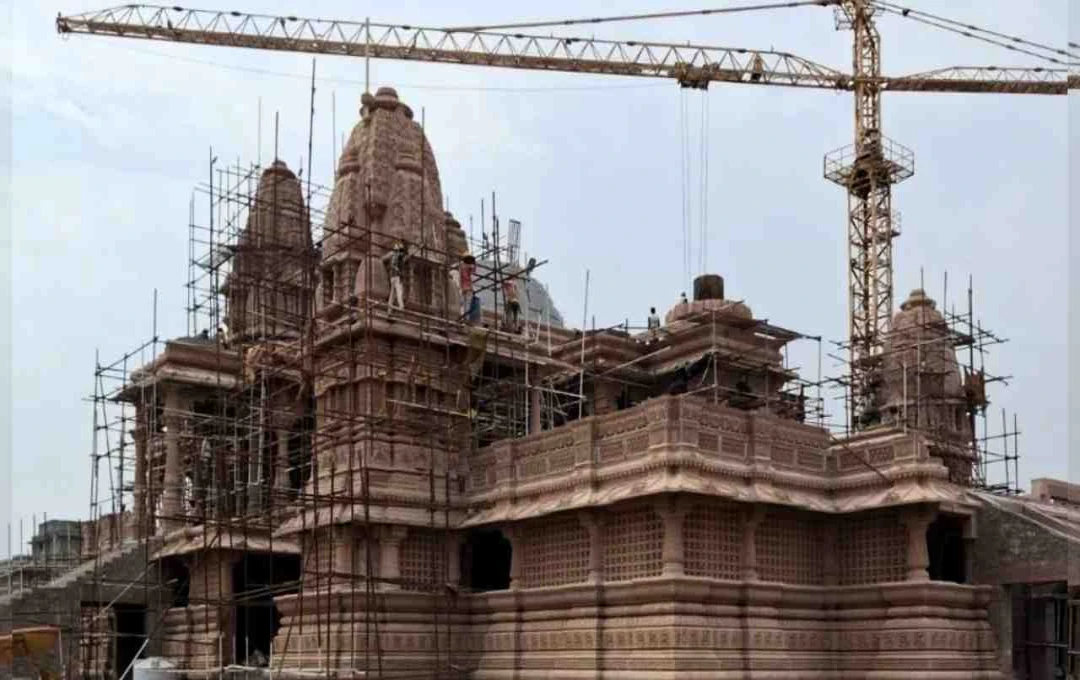Air India Flight AI-171 crashed shortly after takeoff from Ahmedabad. The pilot reported a loss of thrust. The accident resulted in the death of 242 people.
Ahmedabad Plane Crash: Air India flight AI-171, en route from Ahmedabad to London, was involved in a major accident. Minutes after takeoff, the aircraft lost control and collided with the mess building and hostel of BJ Medical College. This resulted in the deaths of all 242 passengers on board, as well as medical students and doctors. Shortly before the crash, the pilot reported a loss of thrust. Initial investigations are exploring potential causes, including engine failure, bird strike, technical malfunction, or pilot error.
A Picture of the Disaster: What Happened That Afternoon?
On Thursday afternoon, Air India flight AI-171, departing from Ahmedabad airport for London, lost control within minutes of takeoff. As the Boeing 787-8 Dreamliner reached an altitude of 425 feet, the pilot informed ATC of a loss of thrust. Moments later, the aircraft rapidly descended and collided with the BJ Medical College mess building, subsequently impacting a nearby hostel.
The impact was catastrophic, resulting in a large fire and a plume of black smoke visible across the area. Rescue teams, fire brigades, and medical personnel arrived quickly, but it was too late for many.
Who Were the Victims?

The aircraft carried 242 people, including passengers and crew members, all of whom perished at the scene. Additionally, MBBS students, senior resident doctors, and other medical staff at BJ Medical College were also among the casualties. The plane first struck the medical college mess hall, then impacted the hostel building, where numerous doctors and medical students were present.
The Pilot's Final Message: 'Not Getting Thrust'
A crucial piece of information came from the pilot himself. Seconds after takeoff, the pilot radioed air traffic control: “I’m not getting thrust,” indicating a lack of power necessary for flight. Almost immediately after this transmission, the aircraft lost control and crashed.
Was There Engine Failure?
Commercial aircraft like the Boeing 787-8 Dreamliner have two engines. Even with one engine failure, the other should be capable of ensuring a safe landing. Therefore, engine failure alone seems an unlikely explanation for such a catastrophic event.
Bird Strike or External Collision?
Bird strikes are a common occurrence during the initial moments of flight. Birds can sometimes enter engines, causing engine failure or fire. However, in this case, the aircraft was not engulfed in flames in mid-air. Eyewitness accounts and CCTV footage indicate that the explosion and fire occurred upon impact, making a bird strike less likely, though it remains a factor under investigation.
Pilot's Message Points to Technical Malfunction
The pilot's report of insufficient thrust bly suggests a serious technical malfunction. This could involve a failure in systems such as the fuel pump, injection system, engine control module, or thrust lever. While pre-flight technical inspections are standard procedure, some malfunctions only become apparent during takeoff.
What is a Stall and How Does It Occur?
A stall occurs when an aircraft loses the airflow necessary for lift. The wings generate lift by slicing through the air. If speed is reduced or thrust is lost, the wings lose support from the airflow, causing a sudden descent.

Takeoff requires a speed of approximately 300 km/h. A loss of thrust could induce a stall. Experts suggest this accident may have resulted from such a scenario.
Was Pilot Error a Factor?
Pilots play a crucial role during takeoff and landing. Once airborne, autopilot usually engages. However, takeoff requires heightened vigilance. The pilot's timely communication suggests efforts were made to address the situation. However, the possibility of human error remains a subject of investigation.
The Cause of the Large Explosion: Fuel Quantity
The intensity of the explosion, despite the relatively low altitude, is attributed to the large fuel load. This was a long-haul international flight from Ahmedabad to London, carrying over 100,000 liters of fuel.
According to the Ministry, the aircraft's fuel capacity is approximately 126,000 liters, with roughly 100,000 liters onboard at the time of the crash. Upon impact, this fuel ignited, resulting in a massive fire that claimed the lives of passengers and those in the nearby buildings.
Post-Accident Situation and Investigation
Following the crash, NDRF, fire brigades, medical teams, and airport authorities initiated rescue operations. However, the fire and smoke significantly hampered rescue efforts. Home Minister Amit Shah expressed condolences and requested a report from the DGCA. The black box and cockpit voice recorder have been recovered and will be crucial in determining the cause of the accident.















